Botox, though, is not incorporated in dental practice only due to cosmetic factors. For instance, Botox causes a suspension of the contractions of the muscles, resulting in its wide use for the treating of various problems of the temporomandibular joint or bruxism problems that refer to the intense contraction of the chewing muscles.
Nevertheless, education, correct diagnosis and proper choice of case suitability are critical factors for the safe and rational use of such treatment techniques.

- What kind of patients are more suitable for getting a Botox treatment
- Is local anesthesia necessary during the injections process
- What do we have to take care after the procedure
- Botox's side effects
- Areas suitable for Botox treatment
- After the Botox treatment am I going to end up unexpressed
- How long does the Botox's effect last
- What are the age limits
- If something is not satisfactory enough can it be fixed
- Is Botox dangerous
- Authorized products available in the market
- pregnant women
- women that are breastfeeding at the time
- individuals suffering from neuromuscular disorders (myasthenia gravis)
- individuals following particular antibiotics medications (ex. aminoglycosides)
- individuals hypersensitive or allergic to Botox
- individuals suffering from an active facial inflammation

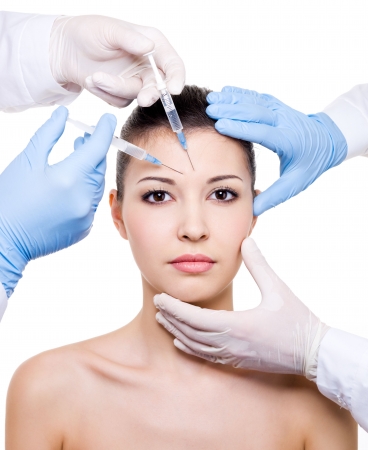
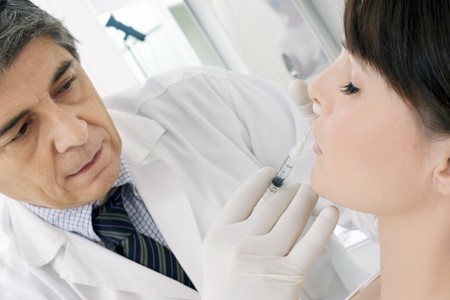
An extremely rare side effect is the temporary eyelid ptosis that is due to poor technique practice performed by non-specialized practitioners or to the massaging if the area by the patient. The eyelid ptosis condition is treated either with the use of iopidine drops or it is allowed to subside naturally.
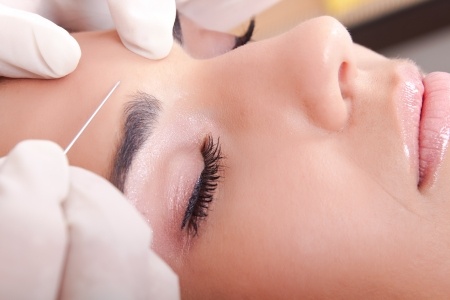
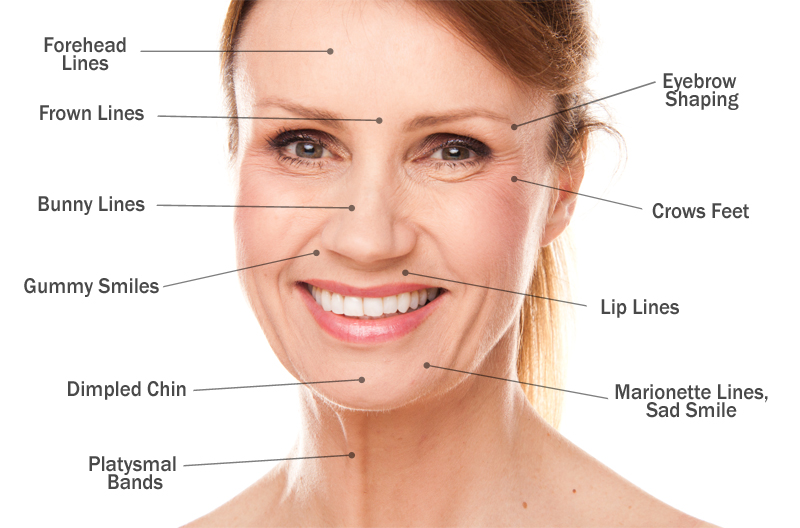
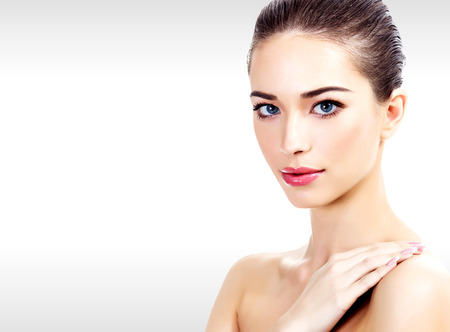
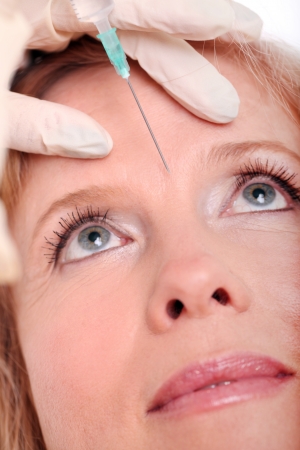
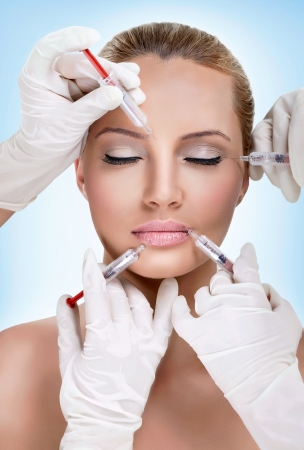
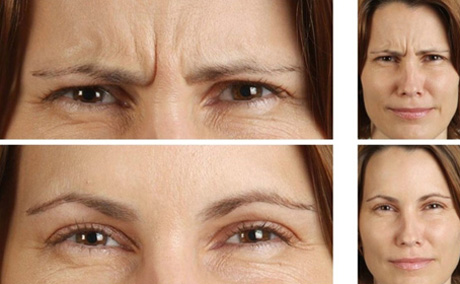
The modern synthetic, injectable products of hyaluronic acid available in the Greek market have become very popular the past years. They are biotechnological products and have proved to be exceptionally safe in practice.
Available forms of hyaluronic Acid
The hyaluronic acid of the transparent gel form is usually used as an injectable implant that aims the uplift of the wrinkles appearance and the increase of the volume of the lips or the cheek bones or even of the chin. Moreover, it can be used for the improvement of the nose before or after a nose plastic surgery, the uplift of the skin of the temporal bones that empties with age, or the uplift of the wrinkles formed in the lower eyelid area. Additionally, as an injectable product it can be used for the facial mesotherapy either alone, or combined with other types of pharmaceutical drugs, hence, it is the best method of deep skin moisturization with immediately obvious results that last.
The hyaluronic acid is also available as a product that targets the problematic areas locally, used in the form of a cream, a gel, a spray or a soaked pad (gauze) that facilitates the healing process of traumas or skin burns. We should keep in mind though in this case, that the hyaluronic acid is a macromolecule, hence its absorption by the intact skin surface is extremely difficult, and the almost unlikely to achieve the aforementioned moisturizing effects through a simple application.
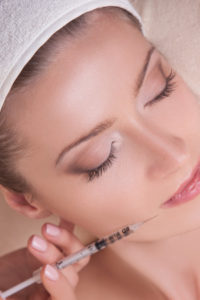
How does the hyaluronic acid act
The hyaluronic Acid is a water-friendly skin ingredient whose main role is the moisturization of the of the tissues. The quantity of water it can retain is estimated to equal around 1000 times its weight. This is the particular substance that makes the skin of the babies to look bright and beautiful while its gradual loss leads to the paper-like and transparent appearance of the elderly skin.
Furthermore, its presence improves the skin’s elasticity, delays the water transportation from the corium towards the skin surface and contributes to collagen production. It also increases the skin’s resistance towards harmful exogenous factors and reinforces its healing and reconstructive ability.
After the injection of hyaluronic acid to the skin, the gel micro-particles of the hyaluronic acid are slowly absorbed by the human body, moisturizing significantly the adjacent tissues. Finally, the gel gets completely diluted and absorbed without leaving any residues, while simultaneously, collagen is possibly produced, thus explaining the reason why the benefits of the therapy are still obvious even after the passing of a significant period of time since the absorption of the substance (9-15 months).

Where is the hyaluronic acid applied
The hyaluronic acid is usually applied in the facial area for the filling of the wrinkles and of the deeper folds, and in areas of the face that have atrophied or have emptied pf soft tissues. More elaborately it is applied to the:
- nasomalar grooves
- edges of the mouth
- upper lip (smoker’s wrinkles)
its application to these areas contributes to the:
- improvement of the lip boundaries
- increase of the volume of the lips
- increase of the volume of the cheek bones
- decrease of the static wrinkles of the forehead or the glabella or the wrinkles around the eyes, after the treatment with botuline toxin (Botox, Dysport).
- improvement of the appearance of the nose or the chin or the shape of the lower jaw
- improvement of the area under the lower eyelid
Depending on the facial characteristics of every patient (facial area, tissue thickness) and patient’s age the proper application technique and material are chosen as regards its specifications in elasticity, liquidity and duration.

When has the hyaluronic acid treatment to be repeated
The implants made of synthetic, crosstab hyaluronic acid vary on their lifetime between the values of 9-12 months. The final duration of the product depends on other aspects as well, such as gender, age, muscle mobility of the area the implant has been placed, and also on the degree of expression ability of the face, the way of living and the chosen product for the therapy.
The injectable preparations of hyaluronic acid are biodegradable. Because of this, the necessity of repeated treatment sessions is considered a disadvantage of the method. Nevertheless, this characteristic also provides the significant benefit of safety, since if the result is not satisfactory, it will be improved with time naturally. Additionally, it is quite rare for these preparations to create granulomas, small scars inside the soft tissues, that usually disappear without leaving any traces.

How is the neutralization of the hyaluronic acid achieved
The injectable hyaluronic acid can be neutralized, if necessary, through the injection of hyaluronidase. The hyaluronidase substance is a water-soluble protein enzyme that act only on the spot it was injected, causing hydrolysis and destruction of the hyaluronic acid. Because of the fact, though, that its action is unpredictable, it should be used scarcely and only when it is absolutely indicated. It should also be noted that since the material absorbs water, the result always becomes more intense after the passing of few days after the application. Thus, it is really important that we fix the impairment particularly when it is close to the skin surface.
The hyaluronic acid, and fat, are until nowadays the only injectable substances that have the ability to be neutralized (hyaluronic acid- hyaluronidase, fat-steroids or liposuction) after their injection inside the body, a trait that enhances even more its safety of use.
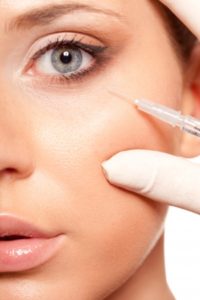
How safe is the hyaluronic acid treatment
The injectable hyaluronic acid is a natural skin ingredient and a product of biosynthesis, meaning it is not of animal origin but of microbial origin. Thus, the development of an allergic reaction to it, is extremely rare, since the material does not contain any animal proteins and a sensitivity test is not required. Additionally, if necessary, the neutralization of the hyaluronic acid is feasible through the use of hyaluronidase, as aforementioned.
All the above traits proved the hyaluronic acid to be the second most popular injectable type of treatment to women of Cosmetic Medicine and the third most popular to men.

Who should not be treated with hyaluronic acid
The injectable hyaluronic acid should not be practiced in the following cases:
- during pregnancy or breastfeeding
- to patients with a thromboembolic events history
- to patients allergic to hyaluronic acid
- to patients suffering from an active skin inflammation of the area that is going to be applied
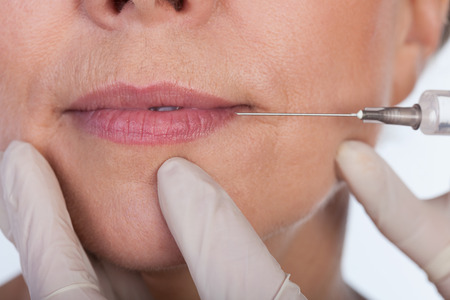
How is the hyaluronic acid treatment performed
The injectable treatment with the use of hyaluronic acid is a relatively simple process that requires significant caution. After the problem analysis a conversation on the treatment options follows. A local anesthesia is applied. After the passing of few minutes the application procedure takes place, which lasts from few minutes to half an hour. By the aforementioned approach and the application of an anesthetic substance, the therapy is not particularly painful and is well tolerated even in the hypersensitive area of the lips. For the areas that surround the eyes, we use round needles that don’t cut and have their hole on the side, in order for traumas and bruises of the area to be avoided.

Post-treatment conditioning
Right after the treatment session we massage the skin area so as to smooth the spreading of the material with caution, and achieve the ideal effect. This is practiced by the doctor and it is recommended to be avoided by the patient for the next 5 days. Additionally, the swelling is controlled by applying some ice on the area. The use of cold pads soaked in a high density chamomile solution, that reduces the swelling, the avoidance of heat exposure and intense facial movements for 5- days until the completion of the moisturizing process of the substance, are recommended.

Hyaluronic acid's treatment side effects
After the treatment with hyaluronic acid it is possible for mild swelling, redness, and more rarely bruises, to be apparent on the spots of the injections. The swelling may be less intense in the lip or cheek bone areas. These undesirable side effects are to a point expected and they last for a small period of time. Great caution is required when sterilizing the skin areas before the application, since the hyaluronic acid is a type of implant and can be infected, resulting in the inflammation of the tissues of the face. It is very important that acne areas should be avoided as insertion spots of the needles used for the treatment. Similarly, as regards the areas around the eyes, that are under the risk of injecting the substance into a vessel and causing catastrophic effects, it is best to use needles with round edges, that have their hole on the side, since they do not cause any trauma and have nothing to do with similar side effects.
Proper age for starting hyaluronic acid's treatments
The starting age for getting a hyaluronic acid treatment is subjective and depends completely on the patients and his/her needs. For the majority of the patients the starting age is set in the 3rd-4th decade of their lives.

Other types of therapies that can be combined with the hyaluronic acid's treatments
Following the hyaluronic acid treatment, a botuline toxin therapy can be scheduled (Botox, Dysport) facilitating and achieving a total facial restructuring. Furthermore, the aforementioned treatments can be combined with peeling sessions, laser and mesotherapy sessions as well. Particularly in the case of a laser treatment, the latter therapy is recommended to precede the hyaluronic acid therapy, or alternatively the application of the hyaluronic acid’s injections session should happen after the passing of 2-3 weeks of the laser therapy, since the latter one can speed up the absorption of the substance.

Cost of the hyaluronic acid's treatment
The cost of the therapy sessions with injections of hyaluronic acid is generally individualized according to the type of the material chosen, the required quantity and the extend of the facial areas the patient wishes to improve. It is quite significant that an estimation of the required volume of the material is calculated in order for the orthologic use of the material to be feasibly realistic and the estimated cost of therapy not to be outlined.






